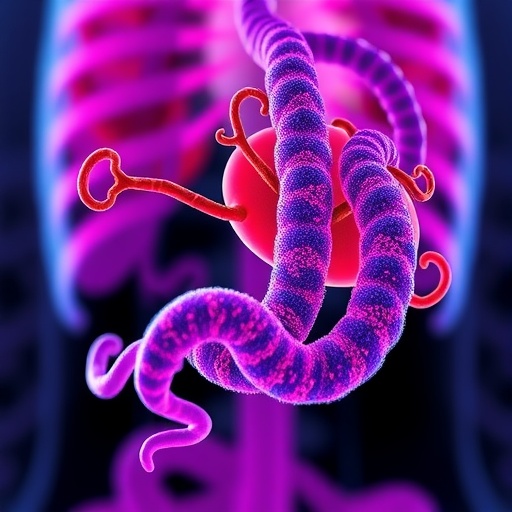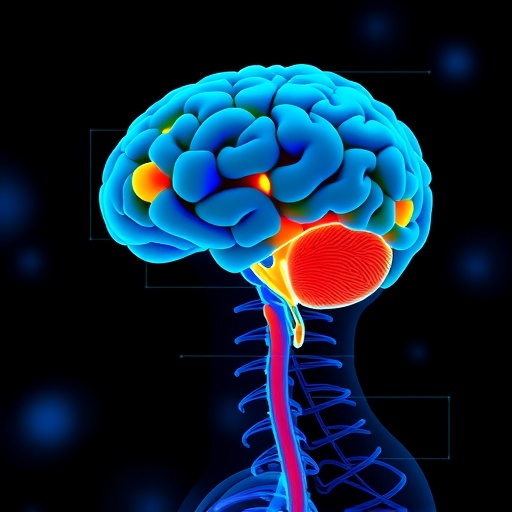In the relentless quest to conquer pancreatic cancer, one of the most aggressive and lethal malignancies, researchers have uncovered a promising natural compound that may redefine therapeutic strategies. The compound, chamaejasmenin B, harvested from traditional medicinal plants, has demonstrated remarkable anticancer potential, particularly targeting pancreatic cancer cells with a dual mechanism involving apoptosis induction and antioxidant effects. This breakthrough research, recently published in Medical Oncology, highlights the multifaceted biochemical interactions of chamaejasmenin B and offers fresh hope for a disease notorious for its poor prognosis and resistance to conventional treatment.
Pancreatic cancer remains a formidable challenge in oncology due to its silent progression, late diagnosis, and limited response to chemotherapy. The urgency to identify novel agents capable of overcoming these hurdles has pushed scientists towards phytochemicals, which often have unique modes of action and lower toxicity profiles compared to synthetic drugs. Chamaejasmenin B emerges from this landscape as a compelling candidate, shedding light on how nature-derived substances can complement or even revolutionize cancer therapeutics.
The study delves deeply into the molecular mechanisms underlying chamaejasmenin B’s effects on pancreatic cancer cells. In vitro analyses have shown that this compound significantly induces apoptosis, or programmed cell death, a critical process that eliminates abnormal cells. Rather than merely arresting the cell cycle or inhibiting proliferation, chamaejasmenin B activates a cascade of intracellular signals that culminate in the dismantling of malignant cells, sparing normal tissue from collateral damage. This selective toxicity is a cornerstone feature that distinguishes it from many chemotherapy agents notorious for harsh side effects.
Central to the compound’s efficacy is its modulation of oxidative stress within cancer cells. While oxidative stress is often associated with cancer progression, the controlled generation of reactive oxygen species (ROS) can trigger apoptotic pathways. Chamaejasmenin B exerts a dual role in this balance: it enhances ROS generation beyond thresholds tolerable for cancer cells while simultaneously bolstering antioxidant defenses, thereby protecting normal cells from damage. This redox modulation represents a sophisticated biochemical interplay that could be exploited for therapeutic gain.
The researchers employed a variety of analytical techniques, including flow cytometry and western blotting, to explore the apoptotic pathways activated by chamaejasmenin B. Their data reveal the upregulation of pro-apoptotic proteins, such as Bax, alongside downregulation of anti-apoptotic factors like Bcl-2. This shift in the protein expression landscape fosters mitochondrial outer membrane permeabilization, releasing cytochrome c into the cytosol and activating downstream caspases. These proteases orchestrate the systematic and efficient destruction of cancer cells, thereby curtailing tumor survival.
In addition to apoptosis, chamaejasmenin B influences the antioxidant enzyme systems within pancreatic cancer cells. Enzymes such as superoxide dismutase (SOD) and glutathione peroxidase (GPx), crucial for maintaining cellular redox balance, were observed to be elevated upon treatment. This augmentation not only prevents the harmful effects of excessive oxidative stress on normal cells but may also create a hostile microenvironment for cancer cell proliferation and metastasis, impairing the tumor’s ability to thrive.
The in vitro findings were accompanied by compelling evidence from animal models bearing pancreatic tumors. Treatment with chamaejasmenin B resulted in significant tumor growth inhibition without notable systemic toxicity. Histological examination of the pancreatic tissues demonstrated marked apoptosis and reduction in angiogenesis within the tumor microenvironment. This suggests that chamaejasmenin B not only kills cancer cells directly but also impairs the formation of new blood vessels essential for tumor sustenance and expansion.
What sets chamaejasmenin B apart is its origin from natural sources, specifically plants used in traditional medicines. This places it within the vibrant context of ethnopharmacology, leveraging centuries-old knowledge for modern medical applications. The compound’s structure has been elucidated as a flavonoid derivative, a class of polyphenols renowned for diverse bioactivities, including anticancer effects. Its ability to influence multiple cellular targets simultaneously may underlie its potency, offering an edge over single-target drugs that quickly succumb to resistance.
The research team also investigated the compound’s effect on pancreatic stellate cells (PSCs), a pivotal cell type within the pancreatic tumor stroma that promotes fibrosis and tumor progression. Chamaejasmenin B was found to inhibit PSC activation, potentially disrupting the tumor’s supportive niche. This stromal modulation could enhance the delivery and efficacy of existing chemotherapeutic agents, presenting opportunities for combination therapies that synergize with chamaejasmenin B’s intrinsic antitumor activities.
Importantly, the safety profile of chamaejasmenin B has garnered attention. Preliminary toxicity assessments reveal minimal impact on vital organs and normal cellular functions, suggesting its suitability for further preclinical development. The side effect spectrum observed thus far compares favorably against standard therapies, which are often marred by debilitating adverse events that compromise patient quality of life.
The implications of these findings extend beyond pancreatic cancer, as the apoptotic and antioxidant mechanisms triggered by chamaejasmenin B may be applicable to other malignancies exhibiting similar dysregulation in oxidative stress and cell death pathways. Ongoing research aims to unravel the full spectrum of cancer types responsive to this compound and to optimize its pharmacological properties for clinical translation.
Additionally, the compound’s bioavailability and pharmacokinetics are under rigorous evaluation, as these parameters critically influence its therapeutic usability. Formulation strategies, including nanoparticle encapsulation and conjugation with targeting moieties, are being explored to enhance delivery to the pancreas while minimizing off-target effects. These innovations promise to elevate chamaejasmenin B from the laboratory bench to a viable clinical candidate.
Experts in the field have lauded this advancement, noting that it exemplifies the potential of integrating natural product chemistry with cutting-edge molecular biology. By unraveling the complex signaling networks leveraged by chamaejasmenin B to induce apoptosis and modulate antioxidant responses, the study paves the way for new paradigms in cancer treatment that transcend conventional cytotoxic approaches.
As the scientific community continues to dissect the multifaceted interactions of chamaejasmenin B, the hope is that its eventual incorporation into therapeutic protocols will improve survival outcomes for pancreatic cancer patients. Given the often dire prognosis associated with this malignancy, novel agents with dual modes of action, such as chamaejasmenin B, represent much-needed progress towards effective, targeted, and less toxic therapies.
In conclusion, the discovery of chamaejasmenin B’s anticancer properties marks a significant milestone in oncological research. By harnessing its unique ability to induce apoptosis through redox modulation and interfere with both cancer cells and their microenvironment, this natural compound offers a beacon of hope in the challenging landscape of pancreatic cancer treatment. Future studies and clinical trials will determine whether this promise can be fully realized, potentially transforming the therapeutic arsenal against one of the deadliest cancers known to medicine.
Subject of Research: Anticancer effects of chamaejasmenin B on pancreatic cancer cells, focusing on mechanisms of apoptosis and antioxidant activity.
Article Title: Anticancer potential of chamaejasmenin B: apoptotic and antioxidant effects on pancreatic cancer cells.
Article References:
Akçaalan, S., Eroğlu Güneş, C., Asadova, L. et al. Anticancer potential of chamaejasmenin B: apoptotic and antioxidant effects on pancreatic cancer cells. Med Oncol 42, 533 (2025). https://doi.org/10.1007/s12032-025-03099-0
Image Credits: AI Generated
Tags: antioxidant effects in cancerapoptosis induction mechanismschamaejasmenin Blate diagnosis of pancreatic cancerMedical Oncology researchmolecular mechanisms of cancernatural anticancer compoundsnovel cancer therapiesovercoming chemotherapy resistancepancreatic cancer treatmentphytochemicals in oncologytraditional medicinal plants





